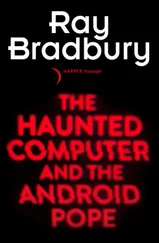Shortly after VisiCalc sales skyrocketed, VisiCorp stopped publishing games altogether. Fylstra and Jennings turned their full attention to what was to become known as the “office productivity” market. They bought two programs called VisiTrend and VisiPlot for more than $1 million, from an author named Mitch Kapor, who was later to parley that stake into the even richer Lotus Corporation. In the meantime, it looked like VisiCorp had another winner.
For the next few years, the money kept flooding in. VisiCorp moved to California and started a small army of programmers working on an even more grandiose scheme that was to be known as VisiOn. Software Arts stayed in Wellesley, Massachusetts, and Bricklin and Frankston hired some people to start working on both an upgraded version of VisiCalc as well as a follow-up to it. Frankston and Bricklin, the originators of the program, now were personally worth tens of millions of dollars apiece, while VisiCorp, as marketer of the program, had become a power to be reckoned with in the software world. In fact, at COMDEX and National Computer Conference—the huge trade shows in Las Vegas and Atlanta that were the business software community’s equivalent of the West Coast Computer Faire—Fylstra was treated with the deference reserved for only the youngest, richest, and savviest entrepreneurs.
Then, sometime around late 1982 and into 1983, the fortunes of both companies took a sudden turn for the worse. One of the biggest problems centered on VisiCorp’s much-bally-hooed VisiOn system. It was billed as the slickest thing since microchips and involved extravagant roadshow demos and much commotion at trade shows. It was a scheme to use a very complex program to integrate different software functions into a single “environment.” Unfortunately, development of the VisiOn project stretched on far beyond the announced release date.
This delay sparked rumors in the industry which suggested that the software was running on a powerful minicomputer but resisted attempts to be fit into a microcomputer’s limited memory. The company’s investment of resources and reputation in the scheme was staggering, but the software was still nowhere to be seen. Ironically, in 1983, ex-VisiCorp author Mitch Kapor’s Lotus Corporation came out with software similar to that conceived for VisiOn. Called 1-2-3, it too was an integrated package that offered a spreadsheet, a business graphics program, and a database all in one. The package made hundreds of millions of dollars in sales. VisiOn, however, barely sputtered out of production. Although the program was eventually released, it sold at only a fraction of its original price. Eventually, the whole project was sold to Control Data Corporation.
In the meantime, Software Arts finished its long-awaited TK!-Solver, the successor to VisiCalc. But unfortunately, few people in the business world understood what to do with TK!-Solver, an equation-based program more suited to those with scientific or mathematical training, and although it didn’t fail, it certainly wasn’t the hit everybody was expecting.
One of the major factors contributing to VisiCorp’s problems was that by 1982, the company in general and VisiCalc in particular had competition. Microsoft’s Multiplan, designed for the newest generations of powerful personal computers, was a “second-generation spreadsheet” that offered more Power and greater speed. There seemed to be two or three new Calc s on the market with every passing week. By the time the advanced version of VisiCalc came along in the fall of 1982, later than VisiCorp had expected, the competition had become almost overwhelming.
Software gets old fast if it isn’t upgraded, and the nerve-wracking wait for the VisiCalc upgrade was a key contributing factor to the nasty legal conflict that erupted between Software Arts and VisiCorp. Sales of VisiCalc dropped sharply in the summer of 1983. In October 1983, VisiCorp filed suit against Software Arts for $60 million, claiming that
Software Arts had failed to adequately support VisiCalc with a timely upgrade. In November, Software Arts countersued VisiCorp for $87 million, claiming that VisiCorp wasn’t marketing VisiCalc adequately.
In the middle of their suit, as they were trading nasty innuendoes in the press, both companies were hit by the 1984 shakeout. Both companies underwent what is euphemistically known as a “reduction in force”—massive layoffs. In mid- September 1984, they reached an out-of-court settlement that involved a simple agreement whereby VisiCorp would pay Software Arts the $500,000 in royalties that it had been withholding since the beginning of the lawsuit. The overall result of their conflict, however, was enormously damaging to both companies. While neither had to pay out the millions of dollars it had originally sued for, they nevertheless expended so much to fight each other that they were severely wounded at a time when they needed all their strength to fight the forces of the marketplace instead.
Adventure International is one of the very few software publishing houses that succeeded primarily on the strength of the software written by their founders. Microsoft was founded on the language interpreters created by Gates and Allen, but its biggest successes— MS-DOS , the operating system for the IBM PC, Multiplan, the “second-generation spreadsheet,” and Flight Simulator —were all written by other programmers. Most of the other software houses are run by people who are businessmen first and (perhaps) programmers second. Scott Adams, on the other hand, minored in business in college, but his major and his first love was computer science. He not only produced the first several programs sold by Adventure International, but nine of them were among the best-sellers that AI’s catalogue, which in time included more than 150 titles, promoted.
Scott is a tall, goateed, curly-haired fellow in his early thirties. His wife, Alexis, is distinctly shorter and more heavy-set. They make an odd couple as they stand together in their ever-changing supermarket-like booths at trade shows.
But they have also been among the most dynamic and—in keeping with their company’s name—the most adventurous entrepreneurs in the software industry. It was, after all, Scott and Alexis who took a chance and published my first simulation game in 1979. In so doing they helped to launch me in the software business by demonstrating that it was actually possible for me to make a living as a programmer. I would have been shocked to know it at the time, but I later learned that I was their first outside author.
By the time I got in touch with him, Scott had been involved in the microcomputer revolution for quite some time. In 1969, he started attending the Florida Institute of Technology. The school is located near Cape Canaveral and is, predictably, oriented to the latest technology. Scott went to the school’s computer center, looking for part-time work to help cover the costs of his education. His first job was putting shipping labels on the computer center’s newsletter, but he soon learned how to program as well, and three years later he had advanced so far that he was programming the school’s financial software in exchange for his tuition.
Perhaps a restless nature and a nose for adventure are prerequisites for entrepreneurial success. Just as I had broken up my college years by wandering off to Africa in search of adventure, Scott left school after three years for a stint in the South Atlantic, working for RCA on tiny Ascension Island, down near Antarctica.
I know several programmers who either learned how to program in the first place or honed the skills they already had when circumstances removed them from the distractions of ordinary life. One of Brøderbund’s star programmers, Chris Jochumson, learned how to program when the Army stationed him on the top of a lonely Korean mountain, where his sole responsibility was to keep the communications gear operational. Scott Adams, down on that bleak island, developed his programming skill while analyzing the radar signatures of spacecraft during his work shifts and playing space games on the same radar scope during his off hours. Scott then went back to school to get his degree. Afterwards, he returned to RCA for a stint in Antigua and later moved to Orlando, Florida, where he found a job making digital telephone switches. When hobbyist microcomputers arrived on the scene, Scott was immediately intrigued. He purchased a computer for $750 from a computer manufacturer called Sphere. In fact, Scott Adams was Sphere’s first customer.
Читать дальше










